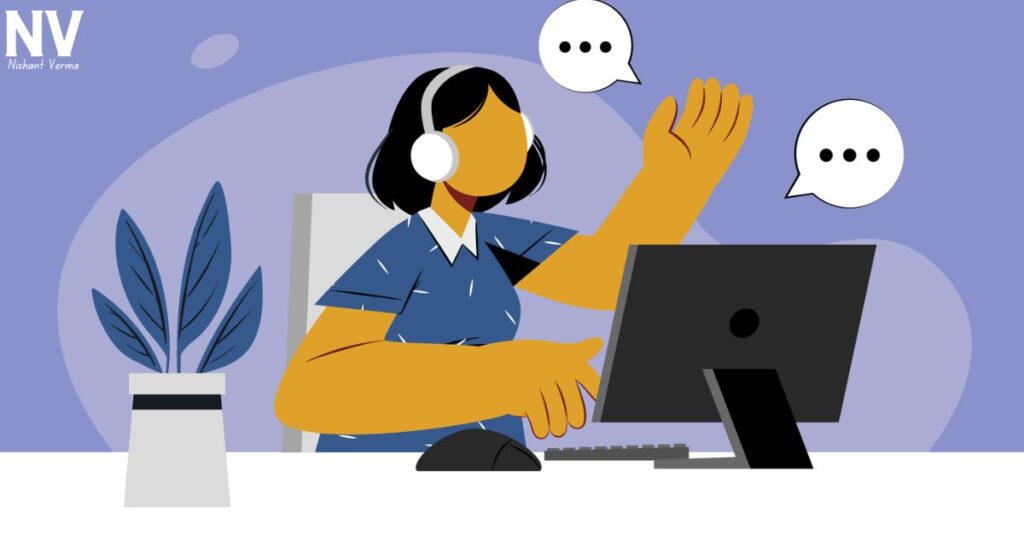Cold calling, the art of reaching out to potential customers without prior contact, can be a daunting task for many. However, it can be a powerful tool to expand your business and connect with new clients when done right. In this article, we’ll delve into the world of Art of cold calling, offering easy-to-follow tips and strategies for success that even the most apprehensive salesperson can embrace.

Section 1: Understanding the Art of cold calling
1.1 What is Cold Calling?
Cold calling involves reaching out to individuals or businesses without previous interest in your product or service. It’s a proactive approach to generate leads and initiate conversations that may lead to sales opportunities. While it may seem challenging, mastering the art of cold calling can significantly impact your business growth.
1.2 The Importance of a Positive Mindset:
Approaching Art of cold calling with a positive mindset is crucial. Understand that not every call will result in an immediate sale, and that’s okay. Focus on building relationships, providing value, and viewing each call as an opportunity to learn more about your potential customers.
Section 2: Preparing for Success
2.1 Research Your Prospects:
Before making a cold call, take the time to research your prospects. Understand their business, challenges, and needs. Tailor your approach to showcase how your product or service can address their pain. This demonstrates a genuine interest and increases the likelihood of a positive reception.
2.2 Develop a Script, but Keep it Natural:
While having a script is essential for staying on track during a call, it’s equally important to sound natural and conversational. Avoid sounding robotic or overly rehearsed. Let your personality shine through, and be prepared to adapt based on the flow of the conversation.
2.3 Set Clear Objectives:
Establish clear objectives for your cold calls. Whether scheduling a follow-up appointment, providing more information, or closing a sale, having a defined goal keeps your conversation focused and purposeful.
Section 3: Building Rapport on the Call
3.1 Start with a Strong Introduction:
The first few seconds of a cold call are crucial. Introduce yourself confidently and clearly, stating your name and the purpose of your call. Be friendly, and avoid using overly formal language to make your prospect feel at ease.
3.2 Listen More Than You Speak:
Effective communication is a two-way street. Listen attentively to your prospect’s responses and concerns. This not only demonstrates respect but also provides valuable insights that can guide the direction of the conversation.
3.3 Use Open-Ended Questions:
Encourage engagement by asking open-ended questions. These questions require more than a simple yes or no answer, promoting a more detailed and insightful conversation. This approach helps you understand your prospect’s needs and preferences better.
Section 4: Overcoming Objections Gracefully
4.1 Anticipate Common Objections:
Prepare for potential objections that may arise during your Art of cold calling. Whether concerns about budget, time, or a specific feature, having well-thought-out responses ready showcases your expertise and helps build trust.
4.2 Address Objections Positively:
When faced with objections, respond positively and empathetically. Instead of viewing objections as roadblocks, see them as opportunities to provide additional information and showcase the value of your product or service.
4.3 Know When to Pivot:
There will be instances where a prospect may not be the right fit. Recognize when to pivot the conversation or gracefully end the call. This not only saves time for both parties but also preserves a positive impression of your business.

Section 5: Following Up Effectively
5.1 Send Personalized Follow-Up Emails:
After a cold call, send follow-up emails summarizing the key points of your conversation and expressing appreciation for your time. Personalize the email to reinforce the connection you established during the call.
5.2 Schedule Follow-Up Calls:
Schedule a follow-up call if the initial call was positive but didn’t result in an immediate sale. This demonstrates commitment and keeps your business on the prospect’s radar. Be persistent but respectful of their time and priorities.
5.3 Provide Additional Value:
In your follow-up communication, offer additional value to the prospect. This could include relevant resources, industry insights, or exclusive promotions. Position yourself as a helpful resource, reinforcing that your product or service can benefit them.

Section 6: Utilizing Technology to Enhance Cold Calling Process
6.1 Invest in a CRM System:
A Customer Relationship Management (CRM) system can streamline your cold calling process. It helps you track conversations, set follow-up reminders, and maintain a comprehensive database of your interactions with prospects.
6.2 Use Call Tracking and Analytics:
Implement call-tracking tools to analyze the performance of your Art of cold calling efforts. Track metrics such as call duration, conversion rates, and the success of different scripts. This data provides valuable insights for refining your approach.
Section 7: Continuous Learning and Adaptation
7.1 Seek Feedback:
Regularly seek Feedback from your team or supervisor regarding your Art of cold calling performance. Constructive Feedback helps you identify areas for improvement and build on your strengths.
7.2 Learn from Successful cold Calls:
Reflect on successful cold calls to identify patterns and techniques that resonate with your prospects. Apply these learnings to future calls, refining your approach based on what has proven effective.
7.3 Stay Informed about Industry Trends:
Keep yourself informed about industry trends, market changes, and competitor activities. This knowledge enhances your credibility during cold calls and allows you to position your product or service as a solution to current challenges.
Conclusion:
Mastering the art of cold calling requires a combination of preparation, effective communication, and a positive mindset. By understanding your audience, preparing diligently, building rapport on the call, overcoming objections gracefully, following up effectively, utilizing technology, and committing to continuous learning, you can turn cold calls into valuable opportunities for business growth. Cold calling is not just about selling; it’s about building relationships and providing solutions that benefit your prospects. With persistence and a customer-centric approach, you can navigate the world of Art of cold calling with confidence and success.




